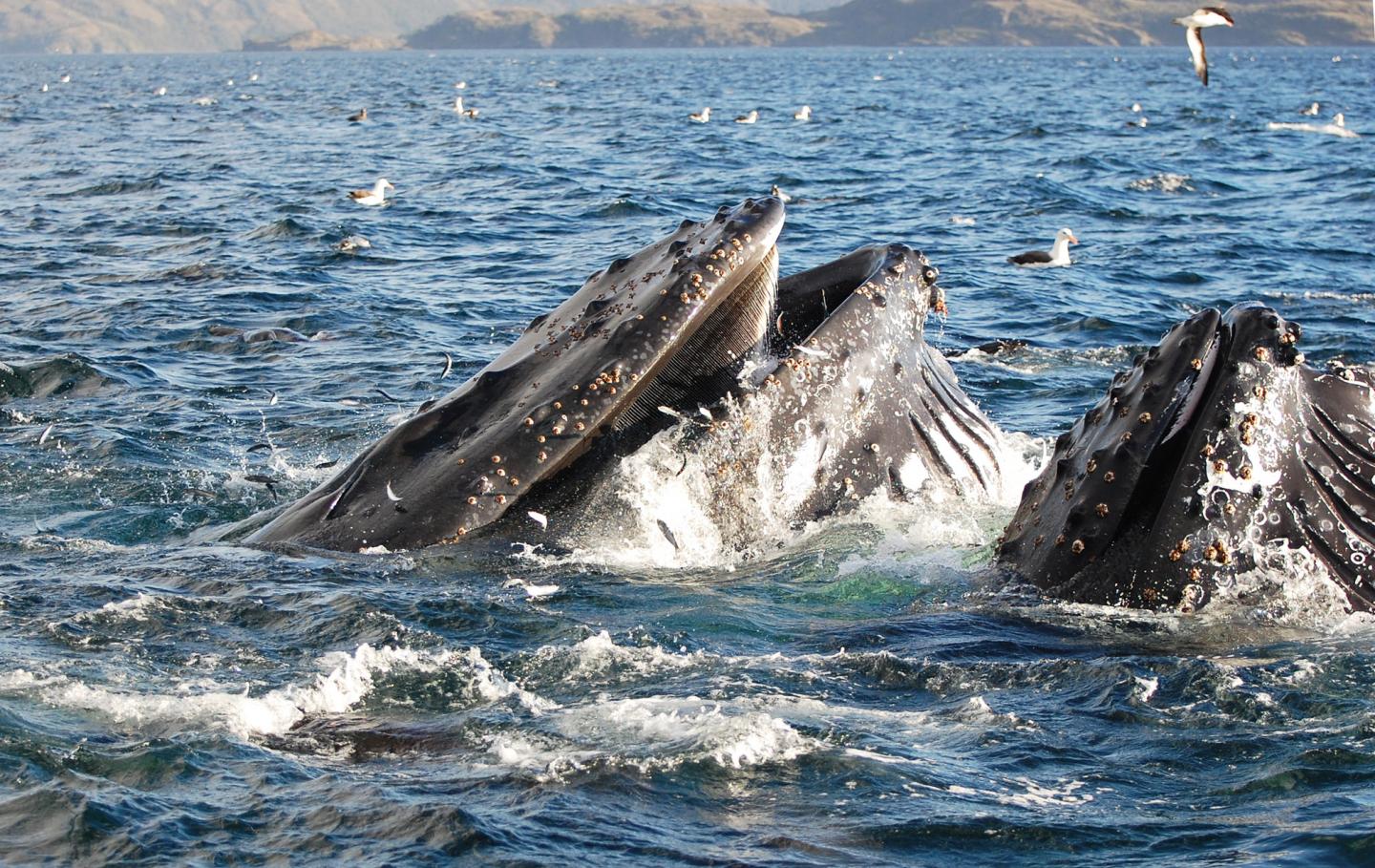
Credit: J.J. Capella
Every summer (November-April), the Magellan Strait in the southwestern part of Chile becomes a popular feeding area for migrating humpback whales (Megaptera novaeangliae). The narrow strait is also a heavily used shipping route. A new study by scientists at the Smithsonian Tropical Research Institute (STRI) and collaborating institutions tracked and modelled the movement of individual whales in order to evaluate the potential of vessel collisions and provide policy recommendations for the protection of whale species.
Humpback whales have the longest migratory journeys of any mammal on Earth. The Southern Hemisphere population spends its summer months feeding in the Antarctic and Chile and their winters in the warmer tropical Pacific waters of northern South America and Central America, as far as Nicaragua. Their movements often overlap with boat traffic and may put them at risk of collision, leading to injury or death. Years ago, STRI researcher Héctor M. Guzmán led a study that resulted in international regulations to separate vessel traffic from whale routes near the Panama Canal and in southern Costa Rica, which drastically reduced collision rates in the breeding areas.
“Designing and implementing traffic-separation schemes for Panama and Costa Rica was difficult, because any measures had to be adopted by the International Maritime Organization,” said Guzmán, also lead author of the new study in Chile. “It was achieved by having the scientific information explain the whale movements and thanks to the unconditional support of both governments.”
The new study, published in Marine Policy, took place in southern Chile, where about 100 humpback whales feed each summer: a population small enough for occasional ship strikes to have important consequences. By tagging and tracking 25 individuals over different years and comparing their movements with available records of vessels traversing the Strait, the team found that, on average, each whale was near a ship about seven times per season. Due to the detailed tracking records of multiple whales, the researchers were able to show that individual animals differed enormously in how often they encountered ships: from less than one to as many as 18 encounters per season.
“Studying variation among whales is a novel feature,” said Richard Condit, co-author and modeler of the study. “Other studies I know only considered the average risk of all whales, but the whales most likely to suffer in collisions are those with higher than average risk. This is a major plus of tracking individuals. During the study period, the tagged whale with the highest encounter rate was found dead.”
They also noted that a majority of the vessels, large cargos and tankers exceeded the recommended speed limit near the whale feeding sites.
“The Strait humpback population increased nearly 300% in 17 years, reaching between 110 and 100 individuals in 2016 and 2017 and then gradually decreasing to 65 individuals in 2019,” said Juan Capella, co-author and researcher from Whalesound (an ecotourism and science project in Chile). “In addition, we report the death of six humpbacks in 10 years, including one young female during our study. If we consider that half of this population is female, a single death represents 3% of the female population in full reproductive age.”
Although international recommendations have already been developed to help reduce the risk of ship collisions with whales worldwide, the results of this study allowed scientists to come up with additional policy suggestions that are aligned with the local circumstances. These include proposed speed limits within the Strait of Magellan and a mandatory observer onboard all commercial vessels.
###
Members of the research team are affiliated with STRI, Whalesound L.T.D., the Universidad de Magallanes and the Field Museum of Natural History. The Researchers were funded by STRI, Whalesound L.T.D. and the Secretaria Nacional de Ciencia, Tecnología e Innovación (SENACYT) of Panama.
The Smithsonian Tropical Research Institute, headquartered in Panama City, Panama, is a unit of the Smithsonian Institution. The institute furthers the understanding of tropical biodiversity and its importance to human welfare, trains students to conduct research in the tropics and promotes conservation by increasing public awareness of the beauty and importance of tropical ecosystems.
Media Contact
Leila Nilipour
[email protected]
Related Journal Article
http://dx.





